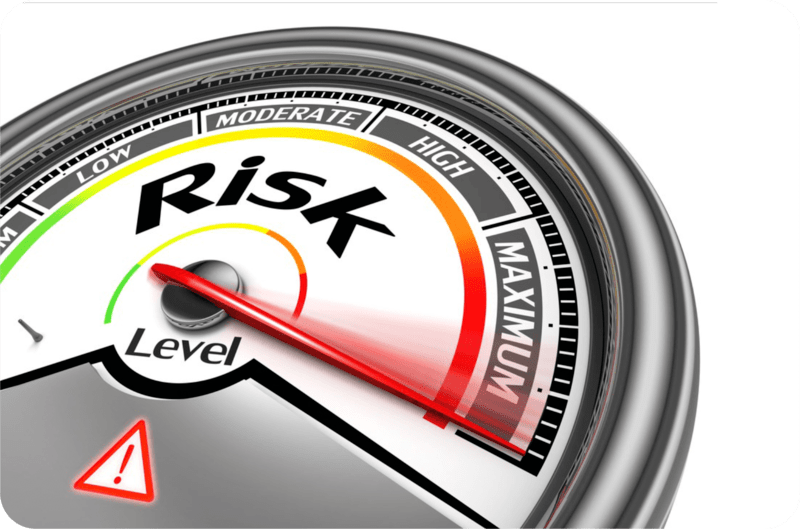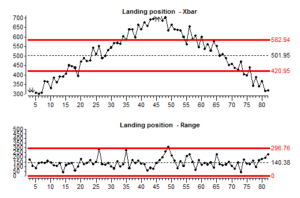What is MSA?
- This course introduces Measurement Systems Analysis (MSA) and the methodologies used to examine both attribute and variable measurement systems as described in the Measurement Systems Analysis reference handbook.
What are 7 QC Tools ?
Who should attend?

ExcellentBased on 1101 reviews
 naveen kumar2024-03-09Thanks to Mr. RIZWAN for the training. Topics are made ease for the understanding purposes. Many points have been cleared with the hands on experience
naveen kumar2024-03-09Thanks to Mr. RIZWAN for the training. Topics are made ease for the understanding purposes. Many points have been cleared with the hands on experience barath kumar2024-03-07I just completed LSS BB program (6 days of weekends) from IQ and it exceeded my expectations. The course materials & contents shared to us was comprehensive, also engaging the way it was presented. Mentor Mr Rajesh Dhanasekar have demonstrated his expertise on this subject, able to taught complex concepts in a way easy to grasp, willing to clarify doubts, easy approachable, simple in communicating. Training environment and arrangements was good, participants from various sectors was helping us to learn real-life problem examples. I recommend IQ to attend LSS programs, anyone who looking for comprehensive, engaging and impactful learning experience.
barath kumar2024-03-07I just completed LSS BB program (6 days of weekends) from IQ and it exceeded my expectations. The course materials & contents shared to us was comprehensive, also engaging the way it was presented. Mentor Mr Rajesh Dhanasekar have demonstrated his expertise on this subject, able to taught complex concepts in a way easy to grasp, willing to clarify doubts, easy approachable, simple in communicating. Training environment and arrangements was good, participants from various sectors was helping us to learn real-life problem examples. I recommend IQ to attend LSS programs, anyone who looking for comprehensive, engaging and impactful learning experience. Sathurshan SV2024-03-04Best place to get trained. Thank you Rajesh for giving this training. He explained everything with patience.Thank you IQ for all the food and refreshments.
Sathurshan SV2024-03-04Best place to get trained. Thank you Rajesh for giving this training. He explained everything with patience.Thank you IQ for all the food and refreshments. Ghayathri Dhayalan2024-03-04I felt I am lucky to know and complete this course. Feeling myself very proud in my workplace.
Ghayathri Dhayalan2024-03-04I felt I am lucky to know and complete this course. Feeling myself very proud in my workplace. abinand j2024-03-04Overall Training and the premise (IITM research park) was excellent. Trainer Mr. Rajesh Dhanasekar did an excellent job in handling the whole crowd and the way he carried the whole 06 days was outstanding. Well done IQ and Team. You have met our expectation far beyond. Keep it up. Cheers :)
abinand j2024-03-04Overall Training and the premise (IITM research park) was excellent. Trainer Mr. Rajesh Dhanasekar did an excellent job in handling the whole crowd and the way he carried the whole 06 days was outstanding. Well done IQ and Team. You have met our expectation far beyond. Keep it up. Cheers :) Gobinath S2024-03-04The great experience for me.
Gobinath S2024-03-04The great experience for me. Aishwarya P2024-03-04I just completed my Lean Six Sigma Black Belt training If you have doubt regarding if this course is relevant to my field, don't even have that doubt, any industry, any domain will relate to Lean Six Sigma and your Problem solving approach will change after you complete this course. Excellent training at affordable fees. Rajesh was a wonderful trainer who has expert knowledge in LSS, I could relate to every aspect of Lean sigma with my work. The course took place in IIT Research park, great campus, they gave us Coffee and Lunch. It was a very useful upskilling for me. This was indeed a Top Notch experience for me. Gained many friends Exchanged knowledge, i will really miss everything.
Aishwarya P2024-03-04I just completed my Lean Six Sigma Black Belt training If you have doubt regarding if this course is relevant to my field, don't even have that doubt, any industry, any domain will relate to Lean Six Sigma and your Problem solving approach will change after you complete this course. Excellent training at affordable fees. Rajesh was a wonderful trainer who has expert knowledge in LSS, I could relate to every aspect of Lean sigma with my work. The course took place in IIT Research park, great campus, they gave us Coffee and Lunch. It was a very useful upskilling for me. This was indeed a Top Notch experience for me. Gained many friends Exchanged knowledge, i will really miss everything.
Who should attend?

ExcellentBased on 1101 reviews
 naveen kumar2024-03-09Thanks to Mr. RIZWAN for the training. Topics are made ease for the understanding purposes. Many points have been cleared with the hands on experience
naveen kumar2024-03-09Thanks to Mr. RIZWAN for the training. Topics are made ease for the understanding purposes. Many points have been cleared with the hands on experience barath kumar2024-03-07I just completed LSS BB program (6 days of weekends) from IQ and it exceeded my expectations. The course materials & contents shared to us was comprehensive, also engaging the way it was presented. Mentor Mr Rajesh Dhanasekar have demonstrated his expertise on this subject, able to taught complex concepts in a way easy to grasp, willing to clarify doubts, easy approachable, simple in communicating. Training environment and arrangements was good, participants from various sectors was helping us to learn real-life problem examples. I recommend IQ to attend LSS programs, anyone who looking for comprehensive, engaging and impactful learning experience.
barath kumar2024-03-07I just completed LSS BB program (6 days of weekends) from IQ and it exceeded my expectations. The course materials & contents shared to us was comprehensive, also engaging the way it was presented. Mentor Mr Rajesh Dhanasekar have demonstrated his expertise on this subject, able to taught complex concepts in a way easy to grasp, willing to clarify doubts, easy approachable, simple in communicating. Training environment and arrangements was good, participants from various sectors was helping us to learn real-life problem examples. I recommend IQ to attend LSS programs, anyone who looking for comprehensive, engaging and impactful learning experience. Sathurshan SV2024-03-04Best place to get trained. Thank you Rajesh for giving this training. He explained everything with patience.Thank you IQ for all the food and refreshments.
Sathurshan SV2024-03-04Best place to get trained. Thank you Rajesh for giving this training. He explained everything with patience.Thank you IQ for all the food and refreshments. Ghayathri Dhayalan2024-03-04I felt I am lucky to know and complete this course. Feeling myself very proud in my workplace.
Ghayathri Dhayalan2024-03-04I felt I am lucky to know and complete this course. Feeling myself very proud in my workplace. abinand j2024-03-04Overall Training and the premise (IITM research park) was excellent. Trainer Mr. Rajesh Dhanasekar did an excellent job in handling the whole crowd and the way he carried the whole 06 days was outstanding. Well done IQ and Team. You have met our expectation far beyond. Keep it up. Cheers :)
abinand j2024-03-04Overall Training and the premise (IITM research park) was excellent. Trainer Mr. Rajesh Dhanasekar did an excellent job in handling the whole crowd and the way he carried the whole 06 days was outstanding. Well done IQ and Team. You have met our expectation far beyond. Keep it up. Cheers :) Gobinath S2024-03-04The great experience for me.
Gobinath S2024-03-04The great experience for me. Aishwarya P2024-03-04I just completed my Lean Six Sigma Black Belt training If you have doubt regarding if this course is relevant to my field, don't even have that doubt, any industry, any domain will relate to Lean Six Sigma and your Problem solving approach will change after you complete this course. Excellent training at affordable fees. Rajesh was a wonderful trainer who has expert knowledge in LSS, I could relate to every aspect of Lean sigma with my work. The course took place in IIT Research park, great campus, they gave us Coffee and Lunch. It was a very useful upskilling for me. This was indeed a Top Notch experience for me. Gained many friends Exchanged knowledge, i will really miss everything.
Aishwarya P2024-03-04I just completed my Lean Six Sigma Black Belt training If you have doubt regarding if this course is relevant to my field, don't even have that doubt, any industry, any domain will relate to Lean Six Sigma and your Problem solving approach will change after you complete this course. Excellent training at affordable fees. Rajesh was a wonderful trainer who has expert knowledge in LSS, I could relate to every aspect of Lean sigma with my work. The course took place in IIT Research park, great campus, they gave us Coffee and Lunch. It was a very useful upskilling for me. This was indeed a Top Notch experience for me. Gained many friends Exchanged knowledge, i will really miss everything.
What is FMEA?
Who should attend?

ExcellentBased on 1101 reviews
 naveen kumar2024-03-09Thanks to Mr. RIZWAN for the training. Topics are made ease for the understanding purposes. Many points have been cleared with the hands on experience
naveen kumar2024-03-09Thanks to Mr. RIZWAN for the training. Topics are made ease for the understanding purposes. Many points have been cleared with the hands on experience barath kumar2024-03-07I just completed LSS BB program (6 days of weekends) from IQ and it exceeded my expectations. The course materials & contents shared to us was comprehensive, also engaging the way it was presented. Mentor Mr Rajesh Dhanasekar have demonstrated his expertise on this subject, able to taught complex concepts in a way easy to grasp, willing to clarify doubts, easy approachable, simple in communicating. Training environment and arrangements was good, participants from various sectors was helping us to learn real-life problem examples. I recommend IQ to attend LSS programs, anyone who looking for comprehensive, engaging and impactful learning experience.
barath kumar2024-03-07I just completed LSS BB program (6 days of weekends) from IQ and it exceeded my expectations. The course materials & contents shared to us was comprehensive, also engaging the way it was presented. Mentor Mr Rajesh Dhanasekar have demonstrated his expertise on this subject, able to taught complex concepts in a way easy to grasp, willing to clarify doubts, easy approachable, simple in communicating. Training environment and arrangements was good, participants from various sectors was helping us to learn real-life problem examples. I recommend IQ to attend LSS programs, anyone who looking for comprehensive, engaging and impactful learning experience. Sathurshan SV2024-03-04Best place to get trained. Thank you Rajesh for giving this training. He explained everything with patience.Thank you IQ for all the food and refreshments.
Sathurshan SV2024-03-04Best place to get trained. Thank you Rajesh for giving this training. He explained everything with patience.Thank you IQ for all the food and refreshments. Ghayathri Dhayalan2024-03-04I felt I am lucky to know and complete this course. Feeling myself very proud in my workplace.
Ghayathri Dhayalan2024-03-04I felt I am lucky to know and complete this course. Feeling myself very proud in my workplace. abinand j2024-03-04Overall Training and the premise (IITM research park) was excellent. Trainer Mr. Rajesh Dhanasekar did an excellent job in handling the whole crowd and the way he carried the whole 06 days was outstanding. Well done IQ and Team. You have met our expectation far beyond. Keep it up. Cheers :)
abinand j2024-03-04Overall Training and the premise (IITM research park) was excellent. Trainer Mr. Rajesh Dhanasekar did an excellent job in handling the whole crowd and the way he carried the whole 06 days was outstanding. Well done IQ and Team. You have met our expectation far beyond. Keep it up. Cheers :) Gobinath S2024-03-04The great experience for me.
Gobinath S2024-03-04The great experience for me. Aishwarya P2024-03-04I just completed my Lean Six Sigma Black Belt training If you have doubt regarding if this course is relevant to my field, don't even have that doubt, any industry, any domain will relate to Lean Six Sigma and your Problem solving approach will change after you complete this course. Excellent training at affordable fees. Rajesh was a wonderful trainer who has expert knowledge in LSS, I could relate to every aspect of Lean sigma with my work. The course took place in IIT Research park, great campus, they gave us Coffee and Lunch. It was a very useful upskilling for me. This was indeed a Top Notch experience for me. Gained many friends Exchanged knowledge, i will really miss everything.
Aishwarya P2024-03-04I just completed my Lean Six Sigma Black Belt training If you have doubt regarding if this course is relevant to my field, don't even have that doubt, any industry, any domain will relate to Lean Six Sigma and your Problem solving approach will change after you complete this course. Excellent training at affordable fees. Rajesh was a wonderful trainer who has expert knowledge in LSS, I could relate to every aspect of Lean sigma with my work. The course took place in IIT Research park, great campus, they gave us Coffee and Lunch. It was a very useful upskilling for me. This was indeed a Top Notch experience for me. Gained many friends Exchanged knowledge, i will really miss everything.
What is SPC?
Who should attend?

ExcellentBased on 1101 reviews
 naveen kumar2024-03-09Thanks to Mr. RIZWAN for the training. Topics are made ease for the understanding purposes. Many points have been cleared with the hands on experience
naveen kumar2024-03-09Thanks to Mr. RIZWAN for the training. Topics are made ease for the understanding purposes. Many points have been cleared with the hands on experience barath kumar2024-03-07I just completed LSS BB program (6 days of weekends) from IQ and it exceeded my expectations. The course materials & contents shared to us was comprehensive, also engaging the way it was presented. Mentor Mr Rajesh Dhanasekar have demonstrated his expertise on this subject, able to taught complex concepts in a way easy to grasp, willing to clarify doubts, easy approachable, simple in communicating. Training environment and arrangements was good, participants from various sectors was helping us to learn real-life problem examples. I recommend IQ to attend LSS programs, anyone who looking for comprehensive, engaging and impactful learning experience.
barath kumar2024-03-07I just completed LSS BB program (6 days of weekends) from IQ and it exceeded my expectations. The course materials & contents shared to us was comprehensive, also engaging the way it was presented. Mentor Mr Rajesh Dhanasekar have demonstrated his expertise on this subject, able to taught complex concepts in a way easy to grasp, willing to clarify doubts, easy approachable, simple in communicating. Training environment and arrangements was good, participants from various sectors was helping us to learn real-life problem examples. I recommend IQ to attend LSS programs, anyone who looking for comprehensive, engaging and impactful learning experience. Sathurshan SV2024-03-04Best place to get trained. Thank you Rajesh for giving this training. He explained everything with patience.Thank you IQ for all the food and refreshments.
Sathurshan SV2024-03-04Best place to get trained. Thank you Rajesh for giving this training. He explained everything with patience.Thank you IQ for all the food and refreshments. Ghayathri Dhayalan2024-03-04I felt I am lucky to know and complete this course. Feeling myself very proud in my workplace.
Ghayathri Dhayalan2024-03-04I felt I am lucky to know and complete this course. Feeling myself very proud in my workplace. abinand j2024-03-04Overall Training and the premise (IITM research park) was excellent. Trainer Mr. Rajesh Dhanasekar did an excellent job in handling the whole crowd and the way he carried the whole 06 days was outstanding. Well done IQ and Team. You have met our expectation far beyond. Keep it up. Cheers :)
abinand j2024-03-04Overall Training and the premise (IITM research park) was excellent. Trainer Mr. Rajesh Dhanasekar did an excellent job in handling the whole crowd and the way he carried the whole 06 days was outstanding. Well done IQ and Team. You have met our expectation far beyond. Keep it up. Cheers :) Gobinath S2024-03-04The great experience for me.
Gobinath S2024-03-04The great experience for me. Aishwarya P2024-03-04I just completed my Lean Six Sigma Black Belt training If you have doubt regarding if this course is relevant to my field, don't even have that doubt, any industry, any domain will relate to Lean Six Sigma and your Problem solving approach will change after you complete this course. Excellent training at affordable fees. Rajesh was a wonderful trainer who has expert knowledge in LSS, I could relate to every aspect of Lean sigma with my work. The course took place in IIT Research park, great campus, they gave us Coffee and Lunch. It was a very useful upskilling for me. This was indeed a Top Notch experience for me. Gained many friends Exchanged knowledge, i will really miss everything.
Aishwarya P2024-03-04I just completed my Lean Six Sigma Black Belt training If you have doubt regarding if this course is relevant to my field, don't even have that doubt, any industry, any domain will relate to Lean Six Sigma and your Problem solving approach will change after you complete this course. Excellent training at affordable fees. Rajesh was a wonderful trainer who has expert knowledge in LSS, I could relate to every aspect of Lean sigma with my work. The course took place in IIT Research park, great campus, they gave us Coffee and Lunch. It was a very useful upskilling for me. This was indeed a Top Notch experience for me. Gained many friends Exchanged knowledge, i will really miss everything.
Who should attend?

ExcellentBased on 1101 reviews
 naveen kumar2024-03-09Thanks to Mr. RIZWAN for the training. Topics are made ease for the understanding purposes. Many points have been cleared with the hands on experience
naveen kumar2024-03-09Thanks to Mr. RIZWAN for the training. Topics are made ease for the understanding purposes. Many points have been cleared with the hands on experience barath kumar2024-03-07I just completed LSS BB program (6 days of weekends) from IQ and it exceeded my expectations. The course materials & contents shared to us was comprehensive, also engaging the way it was presented. Mentor Mr Rajesh Dhanasekar have demonstrated his expertise on this subject, able to taught complex concepts in a way easy to grasp, willing to clarify doubts, easy approachable, simple in communicating. Training environment and arrangements was good, participants from various sectors was helping us to learn real-life problem examples. I recommend IQ to attend LSS programs, anyone who looking for comprehensive, engaging and impactful learning experience.
barath kumar2024-03-07I just completed LSS BB program (6 days of weekends) from IQ and it exceeded my expectations. The course materials & contents shared to us was comprehensive, also engaging the way it was presented. Mentor Mr Rajesh Dhanasekar have demonstrated his expertise on this subject, able to taught complex concepts in a way easy to grasp, willing to clarify doubts, easy approachable, simple in communicating. Training environment and arrangements was good, participants from various sectors was helping us to learn real-life problem examples. I recommend IQ to attend LSS programs, anyone who looking for comprehensive, engaging and impactful learning experience. Sathurshan SV2024-03-04Best place to get trained. Thank you Rajesh for giving this training. He explained everything with patience.Thank you IQ for all the food and refreshments.
Sathurshan SV2024-03-04Best place to get trained. Thank you Rajesh for giving this training. He explained everything with patience.Thank you IQ for all the food and refreshments. Ghayathri Dhayalan2024-03-04I felt I am lucky to know and complete this course. Feeling myself very proud in my workplace.
Ghayathri Dhayalan2024-03-04I felt I am lucky to know and complete this course. Feeling myself very proud in my workplace. abinand j2024-03-04Overall Training and the premise (IITM research park) was excellent. Trainer Mr. Rajesh Dhanasekar did an excellent job in handling the whole crowd and the way he carried the whole 06 days was outstanding. Well done IQ and Team. You have met our expectation far beyond. Keep it up. Cheers :)
abinand j2024-03-04Overall Training and the premise (IITM research park) was excellent. Trainer Mr. Rajesh Dhanasekar did an excellent job in handling the whole crowd and the way he carried the whole 06 days was outstanding. Well done IQ and Team. You have met our expectation far beyond. Keep it up. Cheers :) Gobinath S2024-03-04The great experience for me.
Gobinath S2024-03-04The great experience for me. Aishwarya P2024-03-04I just completed my Lean Six Sigma Black Belt training If you have doubt regarding if this course is relevant to my field, don't even have that doubt, any industry, any domain will relate to Lean Six Sigma and your Problem solving approach will change after you complete this course. Excellent training at affordable fees. Rajesh was a wonderful trainer who has expert knowledge in LSS, I could relate to every aspect of Lean sigma with my work. The course took place in IIT Research park, great campus, they gave us Coffee and Lunch. It was a very useful upskilling for me. This was indeed a Top Notch experience for me. Gained many friends Exchanged knowledge, i will really miss everything.
Aishwarya P2024-03-04I just completed my Lean Six Sigma Black Belt training If you have doubt regarding if this course is relevant to my field, don't even have that doubt, any industry, any domain will relate to Lean Six Sigma and your Problem solving approach will change after you complete this course. Excellent training at affordable fees. Rajesh was a wonderful trainer who has expert knowledge in LSS, I could relate to every aspect of Lean sigma with my work. The course took place in IIT Research park, great campus, they gave us Coffee and Lunch. It was a very useful upskilling for me. This was indeed a Top Notch experience for me. Gained many friends Exchanged knowledge, i will really miss everything.
An organization focusing on improvement & innovation in people, process and technology, thereby ensuring sustainability in the fast growing market
Copyright © 2024. All rights reserved.
